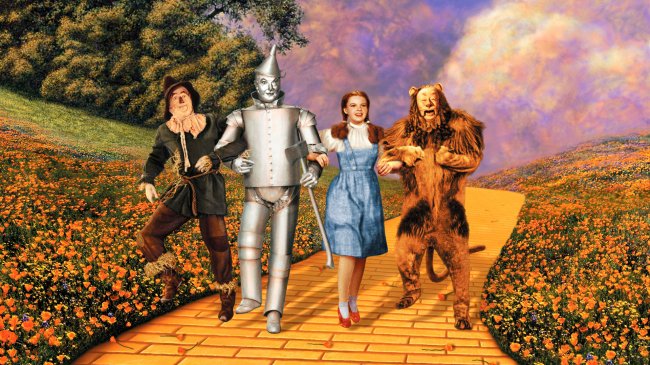
Anyone can be forgiven for thinking MGM’s 1939 musical ‘masterpiece’ The Wizard of Oz (based on L.Frank Baum’s 1900 children’s novel ‘The Wonderful Wizard of Oz’) was an instant mainstream classic. However, MGM invested what was at the time their largest budget ever ($3 million) only to fail to see any healthy financial return or regard the film as successful until after several cinematic re-releases in the 1950’s.
It was therefore a film that took time to grow steadily in statute to the popular culture icon it is recognised as today. This lends fuel to the argument that far from being an instant mass crowd-pleasing ‘blockbuster’, The Wizard of Oz and its place within popular culture today is actually the result of it being a slow-burning cult film with cult audience appeal.
Edited by Ernnest Mathijs and Xavier Mendik, the 2008 publication ‘The Cult Film Reader’ outlines several factors which through a variety of combinations make up the anatomy of a cult film. It is this ‘anatomy’ which the following list takes inspiration from and uses to assert its argument – 10 reasons why The Wizard of Oz is actually a cult film.
1. Breaking the Rules
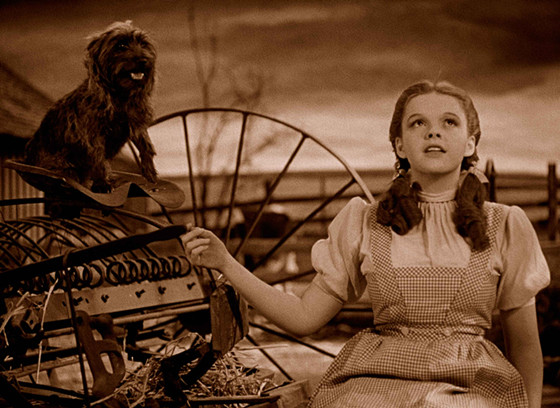
MGM broke or rather bent some contemporary self imposed ‘unwritten rules’ of the industry with the production of the film. The Wizard of Oz followed in the wake of a 1933 Paramount production of Alice in Wonderland, a film which, although shot in black and white, featured a very similar mix of live action fantasy and actors in strange costumes. ‘Alice’ fared badly at the box office, the conclusion being that a fantasy production done in such a way was just ‘too strange’ for mass audiences at that time.
MGM must have been well aware that The Wizard of Oz was a gamble when embarking on the project, with the added budget, then their most expensive until almost immediately superseded by Gone with the Wind (1939), combined with MGM’s reputation for quality, the more cautious may have been be tempted to consider ‘popular fantasy’ better reserved for the animators at Disney and walked away.
However, there were slight compromises at MGM, for the 1939 film it was decided that the events in Oz were to be clearly defined as a dream, the result of being knocked unconscious – the feeling being that the credibility of overt fantasy may still have been too much for the bulk of the audience.
Regardless, the film was doubtless an extremely bold ‘rule twister’. 20th Century Fox would jump on the band wagon a year later in 1940 with the release of their own, now seemingly forgotten, Technicolor live action fantasy The Blue Bird (more later in this list).
The Blue Bird is and was regarded as something of a ‘coat-tail-riding Oz cash-in’, leaving one to wonder if Alice in Wonderland had been in colour back in 1933, the story here might be slightly different, perhaps MGM realised Technicolor was the get out jail free card they required.
2. Innovation: Better Than Life
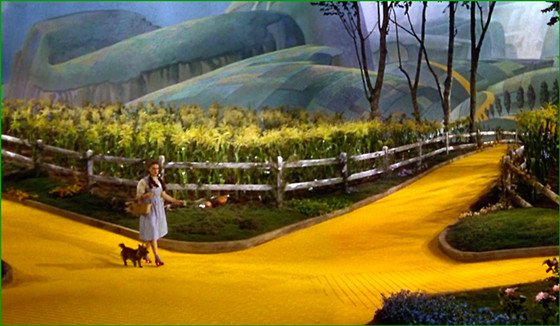
On the issue of Technicolor, yes, there had been colour films prior to 1939’s The Wizard of Oz but few had made use of that colour so overtly. Consider the deliberate contrast to the sepia tones of Kansas at the beginning of the film and the end, if Kansas was supposed to represent reality, then it was almost as though MGM were saying, do you really want to go back to reality – our films are better than life.
This use of Technicolor was not without its casualties, the lighting required generated so much heat on set that many heavily costumed performers frequently fainted – Bert Lahr’s Cowardly Lion perhaps suffered the worst.
Likewise, the special effects and the sets were otherworldly and pioneering: Dorothy (Judy Garland) looking through the window as the twister takes hold, the action taking place in front of an already projected image, yes, that had long since been done (see 1910’s The Great Train Robbery for a similar framed shot) but less so to portray the psychological (she is supposed to have been knocked unconscious – see lower down).
Also consider the ripple/whirlpool effect as Dorothy clicks her heels together to return home, an effect that has since popular shorthand for psychological transgression. Other influences innovative in their depiction include the ‘fake’ Wizard’s head – large and green with an extended domed cranium – like many alien races in 50’s B-Movies.
Also consider big screen spectacles such as Glinda the Good Witch of the North (Billie Burke) in her ball/bubble and the faces in the Wicked Witch of the West’s (Margaret Hamilton) crystal ball and the swooping assault of the Flying Monkeys – it is far to argue that The Wizard of Oz was a ‘special effects film’ before anyone really knew there could be such a thing.
3. Loose Ends: Missing Subplots
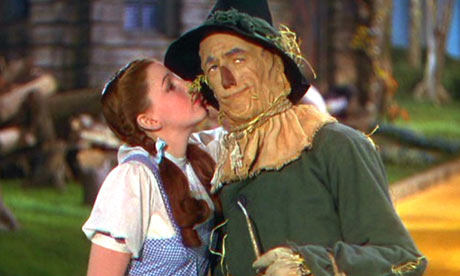
In terms of cult appeal, loose ends can be understood as providing a production with the feeling that the characters ‘live on’ outside of the finished story. The Wizard of Oz does feel like it ends slightly too abruptly, provoking the feeling in the viewer that there should be more after the ‘Kansas family’ assemble around Dorothy’s bed. Perhaps on an emotional level the story doesn’t feel quite finished. This feeling is not unfounded because the film was not originally supposed to end as it does.
Originally, there was to be a quietly blossoming relationship between Dorothy and Hunk/The Scarecrow (Roy Bolger). An original ending, back in Kansas, saw Hunk leaving for agricultural college and Dorothy promising to write, the understanding being that they would marry upon his return.
The most prominent or perhaps only solid evidence of this remaining in the final film is in Dorothy’s dialogue as she leaves Oz and states her feelings that she will miss the Scarecrow ‘most of all’. The final confrontation with the Wicked Witch is comparable to the concluding scene in that it also carries a rather rushed feeling.
The reason behind these and other edits stem from anxieties over the original cut running to almost two-hours, as producer Mervyn Le Roy and director Victor Fleming were well aware, in 1939 the average film ran to 90mins (the final film runs to 101 minutes). It was at this point that ‘Somewhere Over the Rainbow’ was almost cut owing to the time it added to the opening Kansas sequence.
The effect of these edits is, possibly by accident more than design, one of leaving an audience not only wanting more, but also imagining more than there actually was.
Consider this from the perspective of ‘perceived memory’, does the camera really linger on Hunk that beat longer when he first appears, as if to establish some kind of fission between himself and Dorothy – something the viewer then reads more into or merely perceived they witnesses following Dorothy’s parting words when they mentally recall the events of the film.
The effect of this particular ‘retracted subplot’ has the viewer picking at the loose ends, attempting to make sense of the puzzle anyway despite the missing pieces – inviting further viewings or ‘re-readings’ – each individual’s own (re) reading strengthens the film’s cult appeal.
4. Badness: So Bad It’s Good?
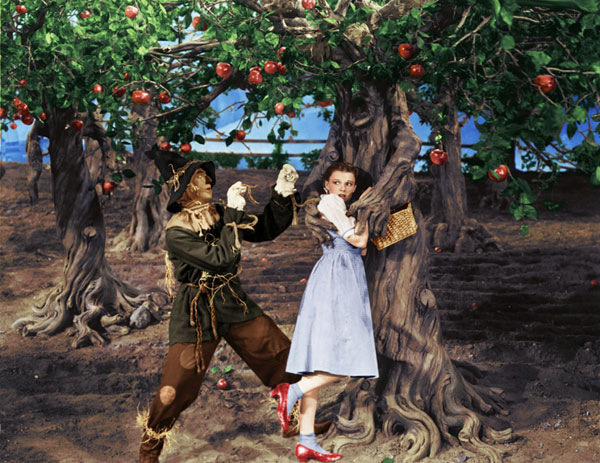
Badness is a subjective term, but in this instance it can be interpreted as both aesthetic in terms of production and morally in terms of content. The typical argument here is that a film is ‘so bad it’s good’ but this doesn’t really apply quite so literally to The Wizard of Oz. Once again, seemingly by accident, some aspects of its ‘badness’ could be understood as having a positive effect for the viewer.
Continuing from the points covered above regarding the need for cuts to reduce the running time, this has led to some rather clunky and disjointed edits in the final film – something some critics at the time picked up on. Throughout the film there are scenes which end a little too suddenly, most notably on at least one occasion where the Wicked Witch’s instructions to the flying monkeys are cut short almost mid sentence only to briefly cut back again a scene later.
One of the more glaring ‘mistakes’ also involves the Witch – the haunted forest sequence sees her state that she is going to send ‘a little insect’ to take care of Dorothy and her friends. However, the next scene cuts in somewhat abruptly with the monkeys swooping down upon Dorothy and company. This was to be the ‘jitterbug’ dance sequence and no longer features in the final film.
Despite having now become ‘iconic’, the Witch’s actual demise is a far from epic sight, featuring a strange almost ‘off stage’ point of view shot from a side angle. These clunky edits provide the film with a lively slightly jumbled sense of ‘raw urgency’. This can be considered in tune with the earlier points regarding ‘loose ends’ in having the effect of leaving the viewer, possibly like Dorothy, with the slightly skewed memories of feverish dream.
One the subject of bad taste, some sources speculate that the ‘romance’ between Dorothy and Hunk/the Scarecrow was diminished on moral grounds. This argument stems from the ambiguity of Dorothy’s age (around 12 in the books). Garland was 16 at the time of filming and famously ‘strapped down’ to make her appear less womanly. In doing this, it creates impression that in the film production Dorothy was to be understood as being younger than the actress playing her.
An argument compounded by the information that child-star Shirley Temple was an early consideration for the role. These factors potentially lead the film into some dark territory. In the filmmakers defence, perhaps given the grey-area provided by Garland’s casting, the abandoned romance was resurrect-able to some extent – does Hunk reciprocate, possibly not, maybe he is just Dorothy’s unrequited teen-age crush and the final edit leaves this as so.
However, the ambiguity this creates allows for an element of moral ‘badness’ depending on how the viewer chooses to interpret what is represented in front of them and/or speculate on the decisions made behind the scenes in the wheels of production. Any sense of ‘wrongness’ somehow jarring favourable with the otherwise ‘niecy-nicey’ aspects of the film.
Of course, the real elephant in the room here is the song ‘Ding Dong the Witch is Dead’, celebrating someone’s death, even in a dream/fantasy land, could be interpreted as being in bad taste.
5. Use & Abuse of Genre: Horror Musical?
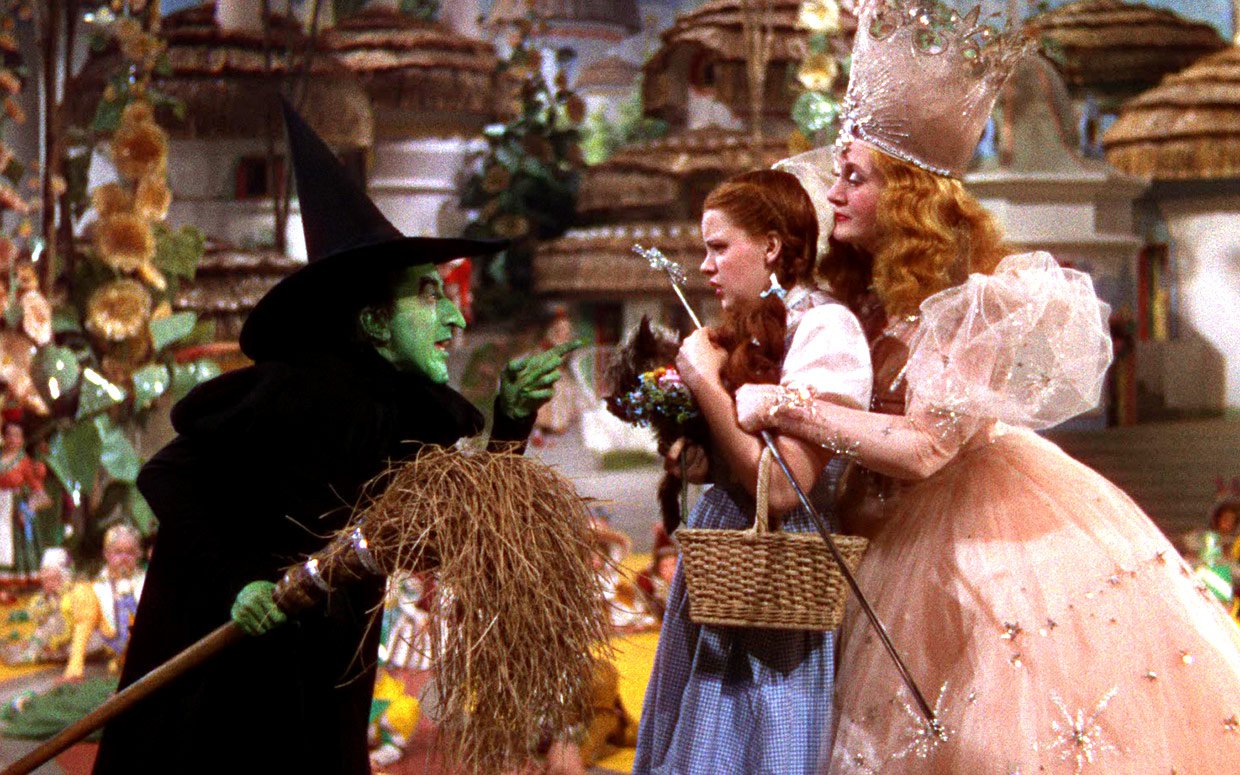
Most would consider The Wizard of Oz as MGM intended it, a ‘full colour’, singing and dancing ‘family’ adventure/fantasy musical. In terms of genre, one might say it was a musical with elements of fantasy. Nothing too ‘genre-abusive’ – musicals and anti-realism go hand in hand.
However, ask many adults what they recall of watching the film as a child and it is typically one of being terrified by the flying monkeys, Hamilton’s Witch or just the garishly heavy Technicolor mix of the film in general (critic Otis Ferguson referring to it as ‘weighing like a pound of fruitcake soaking wet’).
This terror is curious as MGM had a younger audience specifically in mind when developing the film, one of the supporting arguments for almost dropping Somewhere of the Rainbow was that the song was felt to be ‘over the heads’ of its intended youthful demographic.
This raises the argument that MGM inadvertently crossed genre boundaries and stepped into horror territory with The Wizard of Oz – potentially stumbling into the first ‘horror-musical’ or gothic/dark-fantasy for children.
Consider some of the film’s more grisly events, a woman is crushed by a house leaving her legs poking out for all to see, the Witch makes threats to cut off Dorothy’s feet for want of the ruby slippers.
True, there is a Grimm’s fairy-tales logic at play here, but then again, most regard these as quite dark material for children. It is these elements of dark fantasy which, despite various adaptations in the intervening years, somehow make 1985’s, arguably more terrifying, Return to Oz feel like the natural successor to the 1939 film.
Hence the film can be considered not only as using the ant-realist elements of the musical to its advantage but also ‘abusing’ these elements to branch out into the horror genre. Worth noting here is that Paramount’s Alice in Wonderland could also be regarded as requiring a parental warning for younger viewers.